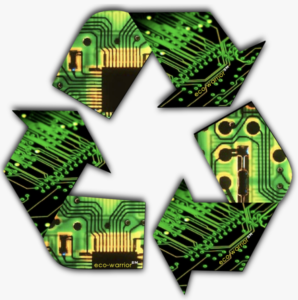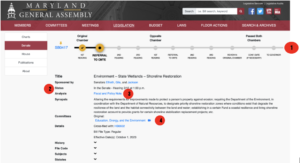April 2023
April 22nd is Earth Day–a reminder for everyone to do whatever they can to incorporate more sustainable choices into their everyday lives.
The first Earth Day was celebrated in 1970 when Wisconsin Senator Nelson organized a national demonstration to call attention to environmental issues. About 50 years later, we can keep carrying the torch by reminding ourselves of our responsibilities to the Earth. Here are some fun ways that you can celebrate Earth Day 2023!
 1) Plant a tree
1) Plant a tree
Something so very easy, and yet so very fun and rewarding. Roughly 15 billion trees are cut down each year, so you can do your part by planting a little tree in your own backyard. Here is a list of trees recommended by the Maryland Department of Natural Resources. Make sure to receive permission from your parent or guardian if you are planting a tree in your backyard and to check any necessary community rules and regulations regarding tree planting.
2) Participate in service (April is Global Volunteer Month!)
If you get any time throughout the month, try and find some student service learning opportunities near you, to give back to the Earth. This can include green scaping, park clean-ups, etc. Reach out to local parks, schools, and libraries to find out about events near you! Some examples of community service include attending or organizing a trash or stream cleanup, creating resources on how your community can be more sustainable, or helping to weed a local community garden.
3) Run an e-waste drive
 E-waste includes any electronics that have been discarded after use–and they make up 70% of the toxic waste in our landfills. Run a drive to organize and collect any used electronics in your community to reduce the amount of toxic material ending up in landfills. You support MASC by simply dusting off your old electronics, placing them in a box, printing the FREE pre-paid shipping label, and taking it to the nearest FedEx to ship. 100% of the proceeds from the recycling of these items will go towards funding MASC, so we can continue to have our amazing events and conferences. Directions are linked here! To find out more about cleaning e-waste, click here.
E-waste includes any electronics that have been discarded after use–and they make up 70% of the toxic waste in our landfills. Run a drive to organize and collect any used electronics in your community to reduce the amount of toxic material ending up in landfills. You support MASC by simply dusting off your old electronics, placing them in a box, printing the FREE pre-paid shipping label, and taking it to the nearest FedEx to ship. 100% of the proceeds from the recycling of these items will go towards funding MASC, so we can continue to have our amazing events and conferences. Directions are linked here! To find out more about cleaning e-waste, click here.
March 2023
Environmental Policies this Legislative Session –In order to make Maryland as green as we can, it’s important that we stay in the loop with environmental policy circulating in the 2023 Legislative Session. Here is a quick guide on how to get started!
 • MyMGA Tracking Account: In order to begin navigating the environmental policy being introduced this Maryland Legislative Session, you need to know where to look. Start by creating a MyMGA Tracking Account, linked here. This will allow you to find and keep track of specific bills that you’re interested in.
• MyMGA Tracking Account: In order to begin navigating the environmental policy being introduced this Maryland Legislative Session, you need to know where to look. Start by creating a MyMGA Tracking Account, linked here. This will allow you to find and keep track of specific bills that you’re interested in.
Finding Environmental Legislature: To find specifically environmental policy, look through the legislature proposed by specific committees–like the Environment and Transportation Committee or the Education, Energy, and Environment Committee. You can also filter by looking through Legislature filed under the Department of the Environment.
Next Steps: Once you have found a bill that you’re interested in, you can pin it to your MyMGA list(s), which can be organized by theme, committee, (etc.). That way, you can stay updated on bill hearings.
Testifying: If you feel really strongly about a bill, you can also choose to testify at one of the bill’s hearings–by giving a piece of written or verbal testimony that presents your support in favor of or against a bill. You can do so in an individual capacity, or through an organization you’re part of, like your regional SGA or a council that is interested in testifying.
Understanding Legislation: On the MyMGA website, bill pages will look like this:
 Here are some key details to point out:
Here are some key details to point out:
1: The timeline of the bill shows you where it is in the Legislative Process–if it’s in its original chamber (where it was introduced–Senate or House of Delegates), being heard in the opposite chamber, etc.
2: In addition to the timeline, here you can see exactly when the next hearing for the bill is.
3: The Fiscal and Policy Note is an analysis prepared by the Department of Legislative Services, which basically sums up what the costs associated with the bill would be, as well as an in-depth analysis of current policy on the topic–and how the bill will vary.
4: Clicking on the video icon will direct you towards the committee hearing of the bill, where you can hear testimony on it!
January 2023
 Happy New Year! Take this new year as an opportunity to start fresh, and set a resolution to make more sustainable choices. Before you begin, take a minute to understand the specific impacts that you, as an individual, have on the earth. Click here to figure out your Ecological Footprint, which is your impact on the earth in terms of resources needed to sustain you, and find out how many earths we would need if everyone lived like you.
Happy New Year! Take this new year as an opportunity to start fresh, and set a resolution to make more sustainable choices. Before you begin, take a minute to understand the specific impacts that you, as an individual, have on the earth. Click here to figure out your Ecological Footprint, which is your impact on the earth in terms of resources needed to sustain you, and find out how many earths we would need if everyone lived like you.
Now, every little choice we make or don’t make has a monumental impact on the earth. To have a neutral, or better yet, positive impact, we can start by taking small steps towards more mindful lifestyles. This year, set a resolution to be more proactive about your ecological footprint by creating personal and specific goals. Here are some ideas to get you started:
• Consuming fewer meat products! Meat production is heavily taxing on the environment–through ways like greenhouse gas emissions, deforestation, soil degradation, large rates of water consumption, and the creation of coastal dead zones. In fact, the cattle industry alone accounts for 40% of all methane emissions from food production. While your resolution doesn’t necessarily have to make you vegetarian, consider limiting your meat intake in the new year.
 • Start composting! Composting can be an easy and passive way to reduce your ecological footprint–and benefits everyone involved. You’re reducing the amount of waste ending up in a landfill, and making a natural fertilizer for your soil. It can be as easy as throwing your food scraps in a wooden bin in your backyard and throwing some worms into the pile to decompose the organic matter for you. Check out the MASC Environmental Resources to get more specific information on how to get started with composting.
• Start composting! Composting can be an easy and passive way to reduce your ecological footprint–and benefits everyone involved. You’re reducing the amount of waste ending up in a landfill, and making a natural fertilizer for your soil. It can be as easy as throwing your food scraps in a wooden bin in your backyard and throwing some worms into the pile to decompose the organic matter for you. Check out the MASC Environmental Resources to get more specific information on how to get started with composting.
• Be a conscious consumer! Being sustainable doesn’t necessarily mean completely changing your lifestyle overnight–you can start by setting a goal to be more mindful of what you purchase. Think about how the item was created and how it will be disposed of, to understand exactly what it is that you’re buying. When shopping for clothes, steer clear of fast fashion–which has an environmentally disastrous past and a downhill future. Fast fashion is produced in horrible conditions, and its low quality will lead to a small lifetime, inevitably producing a lot of waste. Instead, opt for higher quality clothes that might be more costly, but will be much better in the long run.
 • Take shorter showers! It seems like such an elementary idea, but reducing your shower time can, directly and indirectly, lead to a much more sustainable lifestyle. Conserving water is crucial, and yet we continue to use it mindlessly; You can start by turning the shower/tap off when brushing your teeth or shampooing, or setting a time limit for your shower. Simply reducing your shower time by 2 minutes saves, on average, 16 liters of water–which adds up a lot over the year.
• Take shorter showers! It seems like such an elementary idea, but reducing your shower time can, directly and indirectly, lead to a much more sustainable lifestyle. Conserving water is crucial, and yet we continue to use it mindlessly; You can start by turning the shower/tap off when brushing your teeth or shampooing, or setting a time limit for your shower. Simply reducing your shower time by 2 minutes saves, on average, 16 liters of water–which adds up a lot over the year.
Hopefully, these ideas gave you a spark to make more green choices in the new year. You can start by evaluating the small decisions that you make in your everyday life, and understanding just how those choices add up–to create a green resolution that is unique to you. That’s all for now, Happy New Year!
December 2022
Happy Holidays everyone! As you’re going about buying presents and preparing for the holidays, keep in mind the simple things you can do to make the season more sustainable–so that our Earth can thrive for many more holiday seasons to come! Here are some ways to make this winter white season, a little more green:
Gift-wrapping:
4.6 million pounds of wrapping paper are discarded each year, and half of this ends up in landfills. If your wrapping paper has metallic foil or glitter on it, it is not recyclable. Instead, opt for:
 • White or brown craft paper–and decorate it yourself for a personal touch!
• White or brown craft paper–and decorate it yourself for a personal touch!
• Old maps
• A bandana or silky scarf
• A biodegradable gift bag that can be reused by the receiver
• Not wrapping your gift (it’s just as valuable!)
Holiday Lights:
 Decorating the house with lights has always been an integral of the season–here’s how to make it even better! Go for energy-saving LED lights that use 80% less energy than conventional lights. They’re cooler–reducing the risk of fire/getting burnt–and you can often connect up to 25 strings end-to-end without overloading your socket.
Decorating the house with lights has always been an integral of the season–here’s how to make it even better! Go for energy-saving LED lights that use 80% less energy than conventional lights. They’re cooler–reducing the risk of fire/getting burnt–and you can often connect up to 25 strings end-to-end without overloading your socket.
You can also opt for solar lights! Their small solar panel(s) charge during the day and allow the lights to shine bright at night; despite having a higher upfront cost than the average incandescent light, they save a lot more money in the long run.
Christmas Trees:
Christmas trees–whether real or artificial–contribute heavily to landfill waste each holiday season. Artificial trees are made from PVC and other plastics, and while being manufactured, produce harmful petrochemicals. Some alternatives include a contemporary all-wood tree made with dowels, or one made entirely from recycled plastic–rated to last 40 years!
If your family has to have a real Christmas tree each year, find an organic tree farm near you, and avoid the harmful pesticides and chemical colorants often used on evergreens. The best option is a potted, native tree that you can plant when the holiday season is over. A native fir tree to Maryland is the Balsam Fir. You can read more about identifying conifers here.
Shopping:
 Instead of buying your loved ones new “stuff,” give them the gift of new experiences–certificates for spa services, restaurants, escape rooms, and memberships are all ways to give an awesome gift while also being sustainable. Even better, give a donation in their name to a charity/fund that they support!
Instead of buying your loved ones new “stuff,” give them the gift of new experiences–certificates for spa services, restaurants, escape rooms, and memberships are all ways to give an awesome gift while also being sustainable. Even better, give a donation in their name to a charity/fund that they support!
When shopping for the big holiday feast, shop organic and local. Bring reusable bags and go to local farmers’ markets or farms to obtain home-grown goods. A locally farmed and sustainable ham will always taste much better than the factory farm meat from thousands of miles away.
November 2022
Welcome to November! With the cooling temperatures, it’s easy to become overreliant on heaters. Here are some ways you can conserve energy during the fall season:
 1. Open the curtains: The sun is a natural resource! Use it to warm up your rooms during the daytime. Close them at night.
1. Open the curtains: The sun is a natural resource! Use it to warm up your rooms during the daytime. Close them at night.
2. Seal cracks and leaks: Check your doors, windows, and walls for any cracks, and seal them with caulk! This minimizes the amount of heat escaping from your home.
 3. Set a lower thermostat temperature: Going on vacation? There is no need to keep your thermostat set to 72° F, as 65° will help lower both your costs and reduce your impact on climate change.
3. Set a lower thermostat temperature: Going on vacation? There is no need to keep your thermostat set to 72° F, as 65° will help lower both your costs and reduce your impact on climate change.
October 2022
October is the season of fall decorations! Here are some ways you can be sustainable during the spooky season:
 1. Avoid throwing your pumpkins away in the trash. They create harmful methane waste in landfills. Instead, compost them or break them open and have wildlife eat them. Many areas have sites available for residents to drop off food waste, such as MOM’s Market and local government buildings, which can be found with a simple Google search!
1. Avoid throwing your pumpkins away in the trash. They create harmful methane waste in landfills. Instead, compost them or break them open and have wildlife eat them. Many areas have sites available for residents to drop off food waste, such as MOM’s Market and local government buildings, which can be found with a simple Google search!
2. Avoid excessive buying. Do you need all those new sweaters, or can you wear some from last year? Is that spooky fashion wear something you’ll keep for a couple of years or throw away right after Halloween is over?
 3. Opt for homemade decorations and costumes. You can try upcycling plastic bags and twine to make ghost decorations, and reusing cardboard boxes to make creative and fun Halloween outfits!
3. Opt for homemade decorations and costumes. You can try upcycling plastic bags and twine to make ghost decorations, and reusing cardboard boxes to make creative and fun Halloween outfits!
4. Spend time outside! Go watch the leaves change color with a reusable water bottle or mug. Spending time each day with the environment has mental health benefits that can immediately be felt!
September 2022
It’s “back to school” season! For the September Green Goals, we can focus on being sustainable as we return to our school settings.
One thing we learned from quarantine is that virtual tools can be very helpful. Avoid using paper unless you have to, as this saves a lot of trees.
The food and agriculture industry generates CO2 and methane, which damage the ozone layer and contribute to the greenhouse effect. The meat industry specifically damages biodiversity, as more and more land is converted to land for raising slaughtered animals. Manure from animals flows into watersheds, increasing nitrogen and phosphorus in our water and contributing to algae blooms and dead zones.
In essence, it’s important that consumers eat less meat. For August, we recommend that you make one of the following fun non-meat recipes:
Meatless food options don’t have to be processed bean patties- there are a plethora of resources online with recipes that don’t have meat. Additionally, we ask that you dedicate at least three meals for each month where you don’t cook with meat- the little contributions added together will make a difference.
 Maryland Association
Maryland Association
















